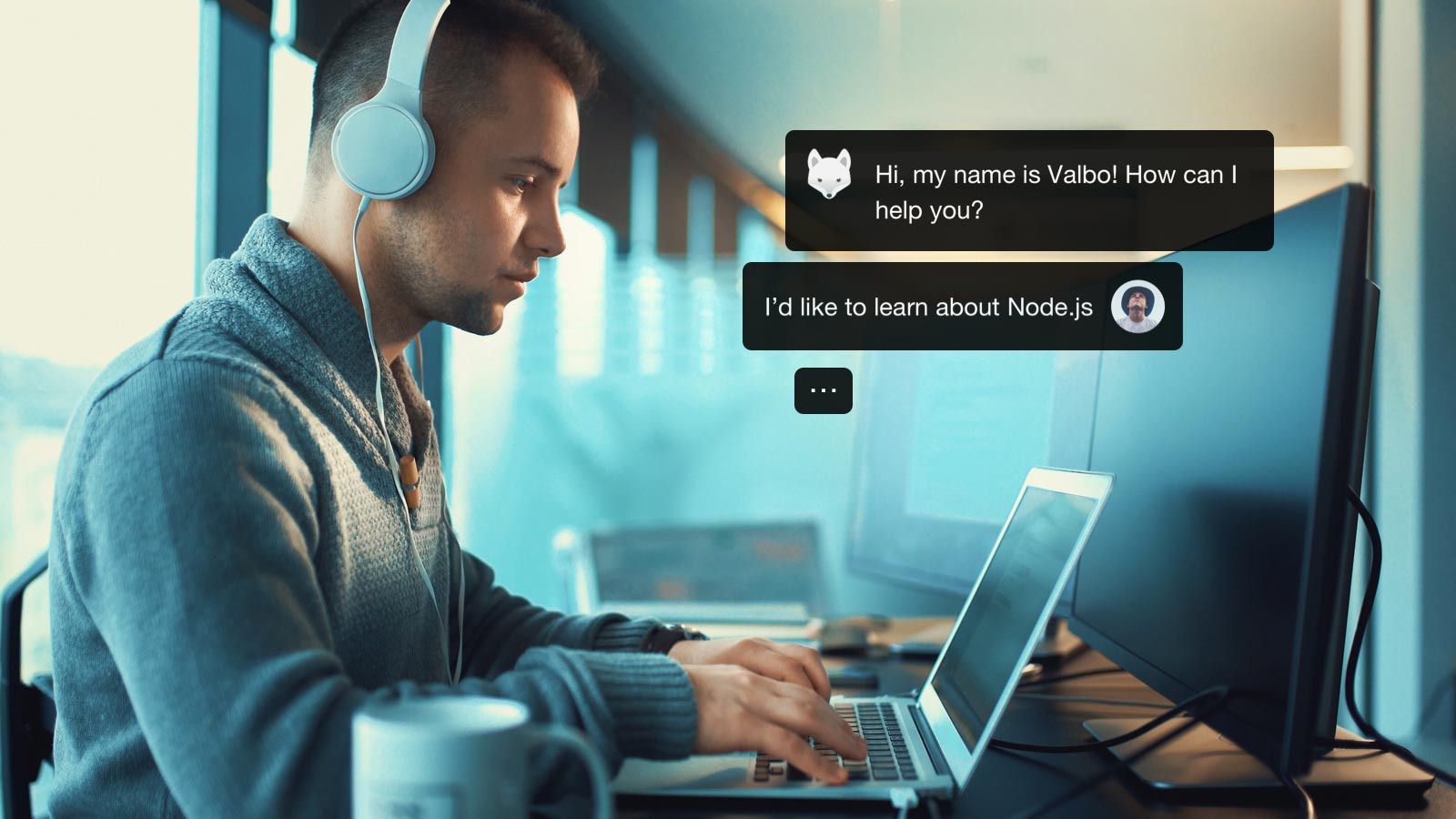Future of education and learning
Explore how new ways of learning could significantly improve the learning process in the education system and corporate organizations.


The nature of work is changing faster than ever before. The digital transformation is impacting people in all industries.
New jobs are appearing and at the same time, jobs are disappearing because technology is advancing and business models are changing to adapt to the digital transformation.
New questions arise:
- Where do you find talented employees to fill new positions?
- What do you do with people in positions that the organization no longer needs? Let them go or retrain them?
- How do you engage Millennials and Generation Z?
The digital transformation poses new challenges for organizations and requires new ways of teaching.
Future of learning in organizational learning
For nearly the past decade, we have seen the same recurring answers from eLearning gurus to the following questions:
- How should we change learning processes?
- What learning trends will be valuable this year?
Each passing year the answers remain the same:
- Gamification
- Personalization
- Mobile learning
- Microlearning
- Big data and analytics
And even though the answers and recommendations remain the same year after year, learning departments still continue to respond to surveys that they are struggling to implement the very things they deem valuable. We know we must make changes, but year after year the changes are not made.
There are many reasons for this stagnancy, but technology will make these changes much easier to implement.
For the next few years, there will be one crucial trend that will dramatically change the way people live and learn; artificial intelligence (AI).
- The first way AI will be used is for deeper personalization,
- The second way, even more important than the first, AI will be used to define how learning affects real business outcomes. We call this The Learning Impact.
The role of Artificial Intelligence in personalization
Personalization surrounds us everywhere in our life: at home and at work, on the internet, in our social networks, on our computers, and phones.
Personalization is in every aspect of our daily life: when we are listening to music in Spotify, watching videos on YouTube or Netflix, viewing our social media feeds on Facebook or Twitter, and looking for products on Amazon.
All these services make informative suggestions according to our preferences, tastes, previous experiences, and also based on the behavior of similar groups of people.
Here are a few examples:
- Google can show more precise search results according to our previous searches;
- Facebook can show the most interesting posts in the feed, according to pages that we have visited and posts that we have liked;
- Google Assistant and Siri can answer more accurately and relative to your interests with each new question;
- Amazon can offer new goods according to the user’s previous purchases or recently viewed products.
Personalization allows us to improve the efficiency in many processes of our life; more relevant information weeds out irrelevant information and saves us time.
But because of the vast differences between learning behaviors, personalization in learning is even more important. The same approach with personalized technology, it can change the learning and development industry significantly.
Imagine how this can improve the learning process. AI technologies can help enable automation in the learning environment. An AI assistant can be taught to communicate with learners to provide more accurate answers or suggest learning materials relevant to their individual traits.
How can you implement personalization in learning by using AI?
AI is supplemented by the amount of information gathered. The more information you have, the more precise your recommendations will be. That’s where Big Data comes in.
Big Data – information that can be turned into an opportunity
Companies like Google, Microsoft, Apple, Facebook, Amazon and many others collect data from millions of users regarding their behavior, preferences, activity, education and more.
They are collecting information through browsers, operating systems, applications and other systems. As a result, they have access to the big amount of data that can bring insights into their business and create a competitive advantage.
So how can you collect data on a learner’s behavior?
This can be accomplished by utilizing Experience API/xAPI, which can track different types of learning activities and store this information in the Learning Record Store (LRS) for future use.
Also, this technology can be used to collect data from the corporate intranet and any other digital environment that learners use.
Additionally, information fraught with insight about the education of learners can be digitized from resumes and surveys containing knowledge and skill level, trainings attended, certifications achieved and everything else related to formal learning.
In the end, you will get aggregated data about your learners, which can be utilized for many purposes.
All of this data about learners can reveal new patterns in corporate learning and higher education while also providing insights on learning behavior in general.
You can find trends within industries, roles, countries, regions, etc; this opens a wide range of opportunities and the ability to find gaps in learning, fix them, optimize the learning process, and gain advantages for your organization.
Here is one example in retail, an industry with the highest employee turnover.
When you have data about learning patterns, you can identify trends by job, position, region, age, and gender.
With this information, you can significantly improve the onboarding process and save on the onboarding budget by addressing each individual learning style instead of forcing standardized material upon various people.
This can result in less time spent on orientation by providing more relevant materials, leveraging microlearning, and answering common questions quickly via a mobile app.
The possible applications of Artificial Intelligence (AI) in education
Artificial intelligence (AI) is a computer system designed to calculate, predict and take action to reach goals.
We shouldn’t think about AI in education as a “silver bullet”, but more of a technological solution that can help us solve some of the current problems in education and bring a new era of learning.
There are a lot of possibilities to utilize AI in education and the most interesting and significant approach is one-to-one intelligent tutoring. AI can act as a real teacher or instructor.
“Imagine lifelong learning companions powered by AI that can accompany and support individual learners throughout their studies…”. – Intelligence Unleashed: An argument for AI in Education – www.pearson.com

The possible applications of AI in learning
1. Personalized Intelligent learning analytics
AI can analyze learning activities, determine patterns and deliver materials to learners based on their education, learning behavior, preferences, and similarity with other learners.
Similar to a real teacher, AI can figure out what type of materials are most suitable for a specific person, and can suggest materials in that format.
In another case, based on a learner’s performance, AI can suggest advanced materials to learners that perform well, and other types of materials e.g. a more structured and easy to understand version of the same material to learners that have underperformed.
Also, AI can measure the effectiveness of learning materials and the effectiveness of instructors. This can help find insights and gaps in learning and suggest ways of using the insight.
AI can analyze learning activities, determine patterns and deliver materials to learners based on their education, learning behavior, preferences, and similarity with other learners.
2. Intelligent automation
AI can be used to structure and classify learning materials and subsequent usage of them in learning paths.
Through interpreting different materials e.g. video and audio to text, image recognition, and deep text understanding, materials can be structured and classified according to different subjects.
This can help learning instructors and teachers in the creation of learning paths, by providing best suggestions according to systematized materials and learners’ behavior.
Additionally, the system can automatically create new learning paths or modify existing learning paths according to analytical data in order to improve them. As a result, this can save instructors time and they will be able to spend it on creative work, e.g. creation of more engaging learning materials or improving low performing ones.
3. Digital learning assistant
Imagine AI-powered assistants like the well-known Siri or Google Assistant, that have access to the learning environment with learning materials, and can adapt to the particular learner, according to their education, preferences, and capabilities.
This brings so many possibilities, for example, you can swiftly enable microlearning, just as easy as you ask “hey Siri how to…”.
Imagine how this can help in the onboarding process by guiding a newbie through his first steps in an organization. Interesting isn’t it?
What if I tell you that some of these capabilities are already available? Let’s talk about that next.
AI-powered personal learning assistant
We already used to Siri, Google Assistant and Amazon’s Alexa. AI assistants are now a part of our life.
According to Verto Analytics, as of May 2017 more than 90 million U.S. adults (total monthly unique users) used AI-powered personal assistants on their smartphones, and they interacted with their assistants an average of 38 times (sessions per month).
According to another study made by Radio Centre, in the UK people are interacting with voice assistants (on different devices) more than 167.75 times per month, which is about 5.5 interactions per day.
Think about it, 5.5 interactions per day, and this metric is only getting exponentially growing. It is only a matter of time before the universal adoption of learning assistants.
From the business perspective, personal learning assistant can significantly improve employee training; onboarding orientation, compliance training, and partner or channel network training.
It can be integrated with the intranet or communicational channel like Slack and inform employees about new learning materials, guidelines, compliance regulation materials, and help them with existing questions.
How AI can help optimize learning to achieve business goals?
Measuring how learning activities affect business outcomes is the most significant problem in Learning and Development (L&D).
According to LinkedIn’s first annual Workplace Learning Report:
- Business impact is the No. 1 measure desired by CEOs in L&D and ROI is the No. 2 measure.
- And yet, only 8 percent of them currently see the business impact, and, only 4 percent see ROI of L&D.
With the help of AI-powered technologies, you can determine connections between learning activities and employees’ performance, and as a result, define how this affects the business performance metrics. That’s when learning impact occurs.
AI will soon be able to determine more data correlations, what data will bring more insights to organizations, and help organizations understand how they can affect their business through learning.
Understanding how learning affects business performance metrics will help companies calculate the ROI of L&D.
Therefore Learning Impact is a huge trend that will affect the way organizations implement their L&D strategy.
AI technology has proven to be a good solution that can help humanity. Using technology for personalizing learning and measuring learning impact is a really huge approach that can significantly improve the learning process in organizations.




